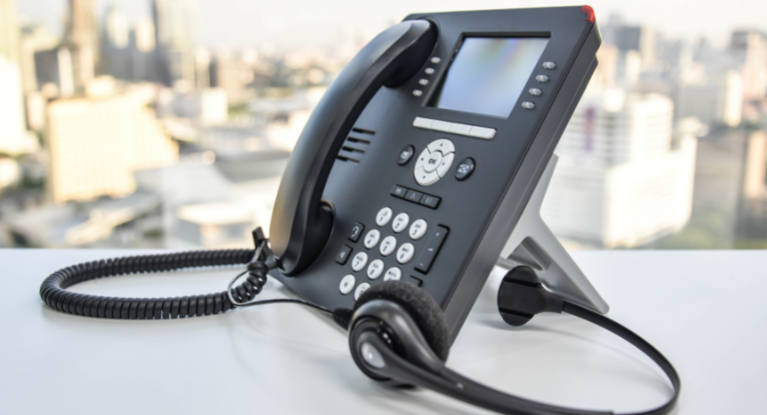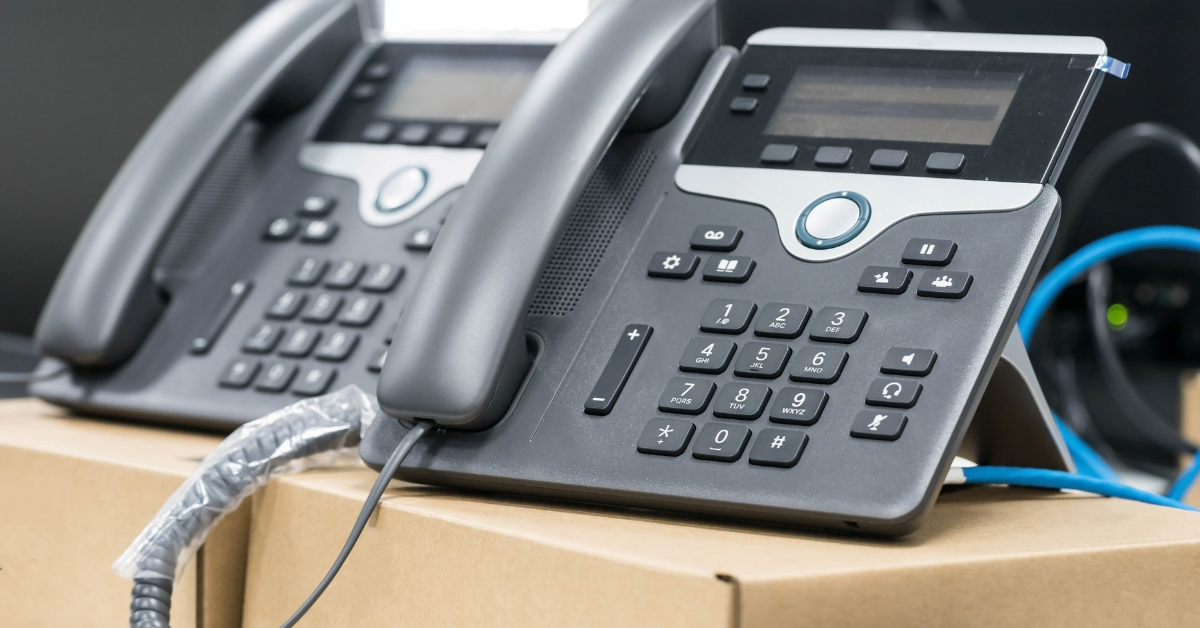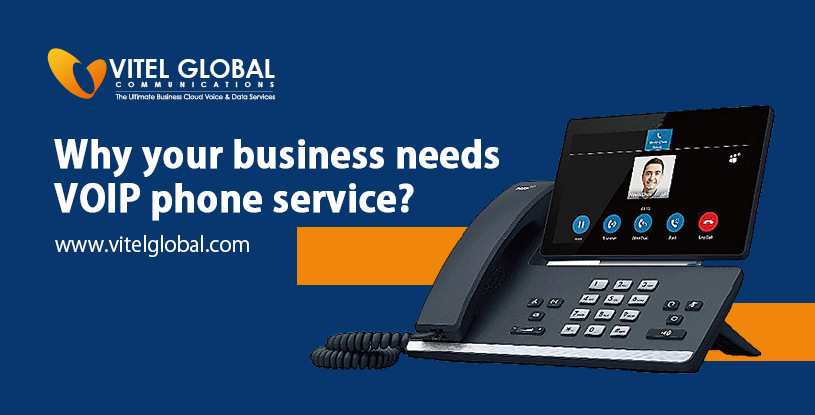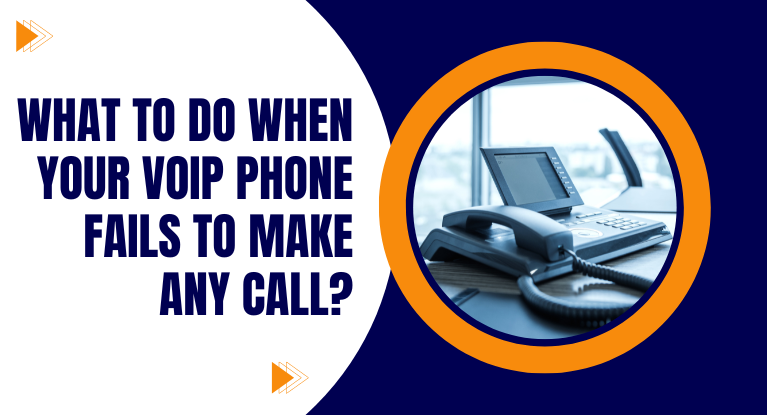VoIP Call Quality & Troubleshooting for Beginners

9 min read
It’s likely that your company already uses VoIP phone service. If not, you should be for many reasons than just the VoIP call quality. A reported 37% of companies used VoIP in 2017, and this percentage is rapidly increasing. What you should know is as follows.
What Makes VoIP Call Quality And VoIP Phone Service So Great?
Several things are involved here, among them here are a few examples. Spend less money: No more ordinary or traditional phone lines. This results in significant monthly phone cost reductions. With remote employees, real estate and overhead expenditures are decreased. Costs of maintenance. VoIP functions differently from conventional phone systems. Hardware maintenance is not as necessary. Additionally, VoIP troubleshooting can frequently be done remotely to avoid an expensive service call.
Accessibility and portability: VoIP phone service for business can be used if you have an internet connection. There is no need to offer clients your home or mobile phone numbers because your number follows you. You can make and take calls whether you’re at home, in an airport, or at Starbucks.
Call Excellence: VoIP calls sound as good as or better than traditional phone calls when using a robust internet connection and lots of bandwidth.
Flexibility: Using many temporary users to make calls? No issue. Cloud IP Phone System lets you add an unlimited number of users. The only restriction you have is network capacity.
Video conferences and calls: VoIP already includes the ability to stream video. No more services or technology are needed. Learn more about your remote employees or have a face-to-face (video) conversation with your newest client.
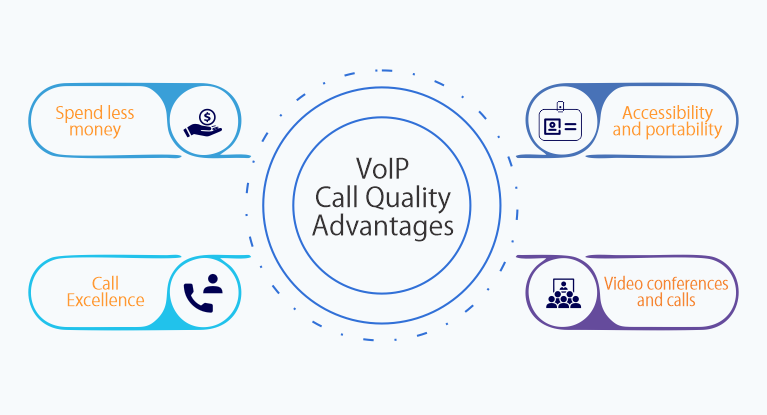
Vitel Global Succeeds in Following All the Mentioned Suggestions
The Voice over IP service has all these fantastic advantages. But what about the customers and your staff? Imagine a situation where employees are free to move into your office as they like.
They are either closing a transaction in the lounge or watching video training in the conference room. They are not tethered to a desk or a large phone.
The person who has a sore throat can return home and finish the rest of the day there. He can bring his phone and work with him. Leaders of call centers can easily keep an eye on call volume and queues. They also can work from home or their office.
The era of complex call and queue maintenance is over. Your leaders are capable of handling call routing and queue creation on their own. You don’t need to employ someone to do difficult programming. You can create brand-new, aspirational KPIs. Those KPIs won’t be an issue. Your staff has the resources and adaptability needed to provide top-notch phone support for your clients.
Additionally, we wish to set you up. Our elite team can demonstrate to you how a VoIP system will change your company. No technical jargon is used here. You’ll find lucid, simple-to-understand information with us. We will converse in your tongue.
But How Reliable Is VoIP Service?
The quick response is yes.
What is so fantastic about VoIP? It’s not brand-new, which is a nice thing. I hear folks remark, “I’ll buy it in a few months,” each time Apple introduces a new iPhone. Once they’ve fixed all the bugs, of course. Although I normally roll my eyes when I hear them say it, they are not altogether off base.
In 1995, VoIP was created, bringing the concept of unified communications to life. It began as a straightforward piece of software that connected two computers’ users via the speakers. The usefulness of the interface was constrained, and it was clumsy. However, technology was still developing.
The capabilities have increased by the time VoIP became widely used in the middle of the 2000s. Voicemail and video chat were added, the software was more adaptable, and the calls were clearer.
Landline cables were also stuffed into the office closets. Like any wonderful technology, VoIP phone systems can occasionally run into issues. Thank goodness VoIP troubleshooting is simple. Let’s first make sure we grasp how VoIP functions before we get into workarounds for problems.
What Exactly Is VoIP?
VoIP, or voice-over-internet protocol, is an abbreviation. Your speech is translated into numbers when you speak on a VoIP line because it is captured in tiny analog bits. These figures are compiled into data packets that each include roughly 20 milliseconds of your voice.
These little data packets are sent from your computer or device to the receiver (the person you are speaking to) over the internet. The audio is played once the data is converted back to an analog signal. Because of how quickly this procedure moves forward, your communication continues as usual. The hosted PBX is where the majority of this technical stuff takes place.
A hosted PBX is simply the location where your VoIP service is managed. Maintenance and routing are handled by the PBX. The crew is skilled in diagnosing and resolving VoIP problems. They also offer technical assistance and instruction. A few businesses, including Vitel Global, provide Cloud Pbx phone systems. With virtual hosting, consumers have even more options.
Is This Also How My Business Operates?
Yes. Whether you use VoIP technology for your home phone or your business phone, it works essentially the same way. Businesses’ worlds are quickly broadened when they adopt VoIP. No longer are employees bound to their desk phones. No longer provide clients with personal cell phone numbers. Using large conference call speakers is no longer a hassle.
Voice over IP makes it simple to interconnect business lines, cell lines, conference lines, and workers from around the world because it doesn’t require analog phone lines. A VoIP phone system is simple to set up. In fact, you can start working in less than an hour. If you have a virtual phone system set up for a remote team, it is even quicker. You can become online in a matter of minutes without any hardware. You only need to download the app and log in to finish.
So, What Are The Problems with VoIP?
The typical VoIP issues can be numbered on one hand. VoIP issues can often be resolved quickly. And since they use tried-and-true technology, they are typically easy to rectify.
Problem 1: Jitter
Describe Jitter.
Do you recall the data packets I mentioned earlier? In any case, there are a ton of them around the internet. In an ideal scenario, each data packet would arrive at its destination in the proper order. That doesn’t happen all the time.
Your VoIP call quality may decrease if there is a lot of jitters. Calls that have audio gaps may seem scrambled or distorted. On a work call, it’s possible that you’ll sound robotic, which is nice but probably not a good thing.
It’s normal to have some degree of jitter. Your call quality doesn’t change at all because it is typically so minimal. There are limits to how much jitter is tolerated and expected. When is jitter considered acceptable? The basic rule is that jitter should be no more than 30 ms. You’ll experience major call quality issues with a jitter of 40 ms.
There is a glaring error. You probably won’t even notice if a data packet is lost or delayed during your phone call and then soon recovered. However, you’ll hear if there’s a more significant delay.
Is it repairable? Examining the network is the first stage in the jitter diagnosis process. A strong connection is necessary for VoIP quality, just like for anything else reliant on the internet. That subject will be covered in more detail later. The next step in troubleshooting is to take a jitter buffer into consideration. Data packets are gathered and stored in a jitter buffer before being sent out at predetermined intervals.
The jitter buffer should maintain the regular, ordered flow of data packets. This preserves the desired level of VoIP call quality.
Problem 2: Latency
What is Lag Time?
Lag or delay is latency. It is the delay in the audio transmission from the caller’s phone to the recipient’s phone. Calls that are delayed sound echoed.
Because there is a delay in hearing the other person, severe latency can lead to users speaking over one another. The quality of the audio itself is unaffected by latency; what is affected is the callers’ ability to speak effectively. Actual Latency Due to their relationship, jitter and latency are measured jointly. Effective latency is the name of the metric. These numbers are used to measure it:
- Latency measured in milliseconds
- Jitter duration in milliseconds
The gadget has a time limit of 10.0 seconds to compress and decompress the data.
What delay is then considered tolerable? On the high end, the common guideline is 250 milliseconds. But this is arbitrary. There will inevitably be higher latency on an overseas call than on a local call. Most users are aware of and agree with this.
A slight lag wouldn’t force you to end a call to India. However, if there is lag while you are speaking to someone inside your building, you might hang up. Is it repairable? Several different problems can contribute to latency.
Using troubleshooting, they can be located very rapidly. It frequently results from network congestion. In addition to increasing delay, network congestion can also increase jitter.
VoIP data prioritization across your network can significantly minimize this. Those data packets can be moved properly via a top-notch VoIP router. A good router can solve a wide range of VoIP phone system issues.
Problem 3: Packet loss
Define Packet Loss.
Let’s go back and review our data packets. You recall that your voice is being transmitted in 20-millisecond bursts from speaker to listener. Data packets that are fully lost and never reach their destination, packets that arrive too late and are discarded, or packets that are discarded due to faults are all examples of packet loss.
Call quality suffers when packet loss levels are high. Your audio is literally missing parts, which makes it difficult to follow the conversation. How are packet losses calculated? The Mean Opinion Score (MOS) was developed by the VoIP industry as a metric for VoIP call quality. This rating is determined by the user’s assessment of the call quality.
Is It Repairable?
Checking your network is the first step in diagnosing VoIP packet loss.
Packet loss can be caused by a crowded network. Your bandwidth might be severely strained by downloading files, sending bulk emails, and making business calls. (You shouldn’t watch Disney at work because of this.)
Your network starts acting strangely whenever it reaches its maximum bandwidth. Errors begin to appear in files, or they are squeezed out and lost. We are therefore lacking data packets. Simple measures such as:
- Don’t rely solely on Wi-Fi for internet access. The hot spot on your cell phone won’t do.
- Make sure your bandwidth is sufficient. The use of VoIP over a dial-up connection is not recommended.
- Reduce network traffic congestion. It’s not a good idea to download music, watch a movie online, and send a large email attachment all at once.
Problem 4
A Bad Internet Connection
I am aware that I require a strong internet connection. You most likely do, yes. But did you know that VoIP traffic isn’t supported by most internet service providers? The typical ISP is designed for file uploads and downloads as well as web browsing. Certain protocols are necessary for sending audio data packets, but your ISP might not be offering them.
A robust, quick internet connection with enough bandwidth is necessary for a VoIP system. Without it, you can anticipate experiencing the VoIP quality issues we’ve discussed.
Questions that are frequently asked I already told you that troubleshooting VoIP was easy. Much of it is very easy to complete on your own. (But keep in mind that Vitel Global offers fantastic assistance if you need it!) Let’s look at five often-asked questions by VoIP users. The solutions are completely free.
Q1. I’m Not Receiving Any Calls.
A: The following are typical reasons for not getting calls:
- Power failure
- No access to the internet
- Signal blockage by a firewall
Lack of power Your VoIP system won’t work if the power is down, just like any other piece of equipment.
To ensure that they never completely lose electricity, the majority of enterprises rely on battery backups or generators. Check your cords and outlets to see whether the power outage is isolated. Lack of internet access all your network-dependent processes stop working if your internet goes down.
Perform some visual troubleshooting initially. Verify that nothing is broken, unplugged, or out of order. Power cycle after that. Contact your ISP if you’re still unable to connect to the internet. Signal blockage by a firewall Make sure the firmware on your router is current. A straightforward router update can solve a lot of firewall problems. Ask for assistance with VoIP troubleshooting if you’re still experiencing issues. Contact the help desk of your small business phone service providers.
Q2. I Can Access The Internet, But I Can’t Place Calls.
The dial tone is absent. A: Often, this is a problem with the equipment. An apparatus has lost electricity. A splitter or phone cable needs to be replaced. The VoIP is being interfered with by another device or system. Make sure your phone still has power if a gadget has lost power. Make sure your wireless headset is charged if you’re using one. defective splitter or cable Look over your cords. Reconnect them after unplugging them.
Try replacing the cable. Third-party voicemail and caller ID can hinder with your existing VoIP service. Something is interfering with VoIP. VoIP problems can also be caused by security systems. Consider turning off these features. What if I keep running into problems? Here we are! To find out how switching VoIP providers might benefit your company, get in touch with Vitel Global.
Don’t abandon VoIP because of few issues. Changing phone systems might be difficult, but our outstanding service makes the change simple. You could have anxiety when making the transfer to a VoIP phone system. After all, your current setup is flawless. But does it provide you the potential to fundamentally alter how you conduct business?
You probably don’t remember the catastrophes that happened when VoIP technology was first developed. Due to advancements in technology, VoIP is now a reliable and secure corporate solution. There is a VoIP solution for you whether your team consists of 10 or 10,000 employees. Your phone system ought to help your company, not hinder it.
End Point
Our experts at Vitel Global respects your patronage. You can save time and effort thanks to our excellent support. You put work into expanding your company; our organization will put time into providing you with a robust VoIP phone solution to help you do that. Nobody ought to be concerned about their phone system.
It’s time for a change if you do. Did you know that we has some of the best ratings and most satisfied clients in the business? Our support team takes pleasure in making the greatest use of your valuable time. You won’t often have to wait on hold because 95% of their support calls are answered quickly.
How was that for respecting your time? When you contact us you may anticipate finding out about specialized solutions for your company. Here is what they have to say. Find out more about how Vitel Global can advance both your phone system and your company.
Published: July 11th, 2022
Subscribe to Our Latest Updates
Get monthly product and feature updates, the latest industry news, and more!

